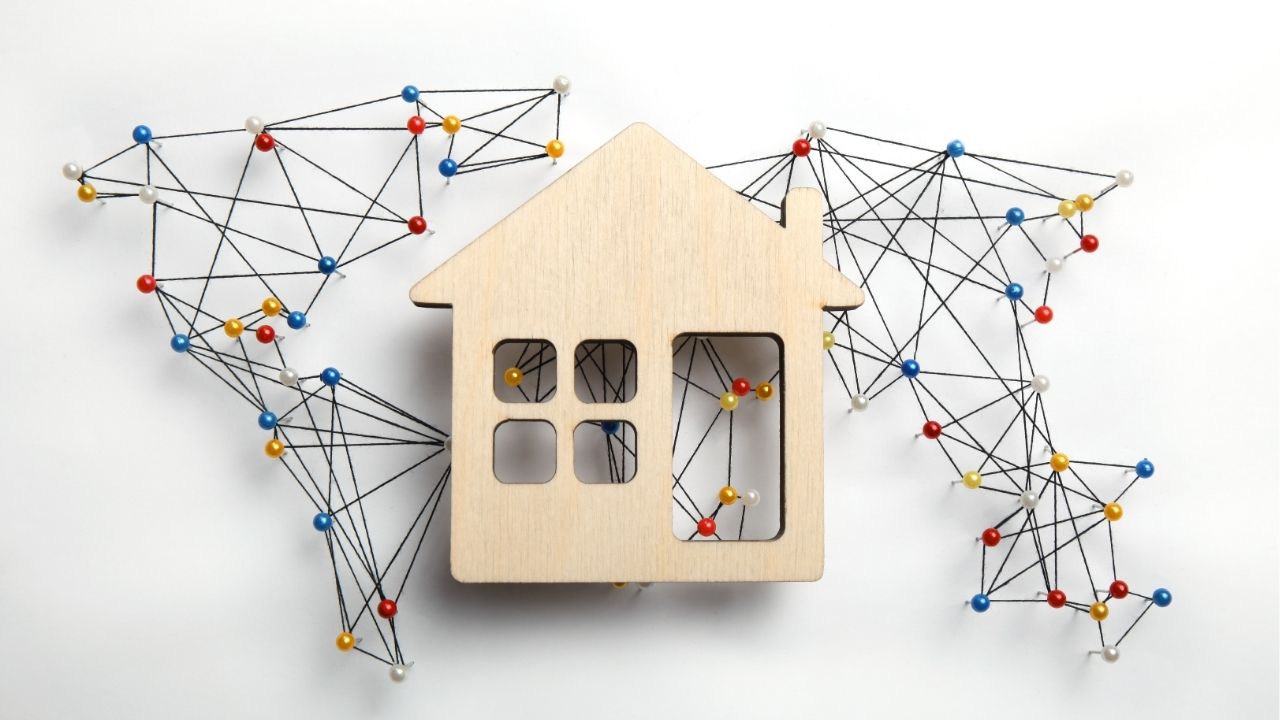 As remote work becomes a standard part of life, the traditional home office is undergoing a major transformation. What was once a corner desk or spare room has now evolved into a personalized, stylish, and functional space. Homeowners are getting creative, designing offices that not only cater to their work needs but also reflect their unique personalities and styles.
As remote work becomes a standard part of life, the traditional home office is undergoing a major transformation. What was once a corner desk or spare room has now evolved into a personalized, stylish, and functional space. Homeowners are getting creative, designing offices that not only cater to their work needs but also reflect their unique personalities and styles.
Creative Home Office Transformations
Some of the most imaginative home offices come from thinking outside the box—literally. For instance:
-
Attic Retreats: Attics, often underutilized, are being converted into cozy workspaces. With sloped ceilings and skylights, these spaces offer a peaceful, secluded environment ideal for productivity.
-
Closet Offices: Known as “cloffices,” closets are being reimagined as compact workspaces. With a desk, shelves, and clever lighting, these small areas become efficient and stylish offices.
-
Nook Designs: Homeowners are maximizing every square foot by converting corners, hallways, or under-stair spaces into sleek workstations.
Features That Spark Creativity
Designing a home office goes beyond just picking a desk and chair. It’s about creating a space that inspires productivity and makes work enjoyable. Here are some popular trends:
-
Standing Desks: These ergonomic desks promote better posture and keep energy levels high throughout the day. Adjustable versions allow for flexibility between sitting and standing.
-
Vibrant Colors: Bold color schemes, like bright yellows or calming blues, set the mood for focus and creativity. Adding an accent wall or colorful decor pieces can transform the vibe of your workspace.
-
Personalized Decor: From family photos to motivational artwork, personal touches make the space uniquely yours. Incorporating elements that resonate with you can boost morale and creativity.
-
Functional Additions: Custom shelving, cable organizers, and storage solutions keep the space tidy and efficient. Meanwhile, adding plants or natural elements brings freshness and a calming atmosphere to the room.
Maximizing Space for Productivity
One of the challenges of designing a home office is maximizing space, especially in smaller homes. The solution lies in multipurpose furniture and smart layouts. For instance:
-
Floating Desks: Mounted directly to the wall, these desks save floor space while providing a modern aesthetic.
-
Foldable Furniture: Desks and chairs that fold away are perfect for dual-purpose rooms, allowing you to reclaim the space when the workday is over.
-
Room Dividers: For those working in shared spaces, dividers can create a sense of privacy and separation, even in open-plan areas.
Inspiration and Creativity
The beauty of these creative home offices is that they show what’s possible when you think beyond traditional designs. Whether you have a large room to dedicate or a small nook to work with, the right combination of functionality and style can turn any space into an inspiring work environment.
Highlighting imaginative designs not only sparks ideas but also demonstrates how anyone can create a workspace that reflects their personality, meets their professional needs, and enhances productivity.
The rise of remote work has changed the way we view our home environments. A thoughtfully designed home office isn’t just a luxury, it’s a necessity. By infusing creativity into your workspace, you can create a setup that supports your career and complements your lifestyle.

 Selling your home can be exciting and emotional. You may be focused on the potential profit from the sale, it’s essential to understand the costs that come with closing the deal. Closing costs can significantly impact your net proceeds, so being prepared will help you avoid surprises and plan accordingly.
Selling your home can be exciting and emotional. You may be focused on the potential profit from the sale, it’s essential to understand the costs that come with closing the deal. Closing costs can significantly impact your net proceeds, so being prepared will help you avoid surprises and plan accordingly.  When selling your home, first impressions are everything. A clean, well-organized space allows potential buyers to envision themselves living there and can even increase the perceived value of your property. Cleaning is not just about making your home look good; it’s a strategic move to ensure your home stands out in a competitive market. Here’s how to tackle the cleaning process effectively when preparing your home for sale.
When selling your home, first impressions are everything. A clean, well-organized space allows potential buyers to envision themselves living there and can even increase the perceived value of your property. Cleaning is not just about making your home look good; it’s a strategic move to ensure your home stands out in a competitive market. Here’s how to tackle the cleaning process effectively when preparing your home for sale. Finding your dream home is one of the most exciting and personal journeys you’ll ever take. Just like crafting the perfect cup of coffee, choosing the right home is all about finding the blend that matches your unique preferences. For some, it’s all about practicality, while for others, it’s about charm, savings, or convenience.
Finding your dream home is one of the most exciting and personal journeys you’ll ever take. Just like crafting the perfect cup of coffee, choosing the right home is all about finding the blend that matches your unique preferences. For some, it’s all about practicality, while for others, it’s about charm, savings, or convenience. When most people think about buying a home, the spring and summer months often come to mind. After all, that’s when the market is buzzing with activity. However, what many don’t realize is that January can be one of the best times to purchase a home. From motivated sellers to financial benefits, buying during the winter months offers several unique advantages for savvy homebuyers.
When most people think about buying a home, the spring and summer months often come to mind. After all, that’s when the market is buzzing with activity. However, what many don’t realize is that January can be one of the best times to purchase a home. From motivated sellers to financial benefits, buying during the winter months offers several unique advantages for savvy homebuyers.
 When it comes to real estate, you’ve likely heard the phrase, “Location, location, location!” This isn’t just a catchy mantra, it’s a fundamental truth that underscores the value of any property. While a home’s design, size, and features play a role in your buying decision, the location is often the most critical factor that determines both the property’s current worth and its long-term potential.
When it comes to real estate, you’ve likely heard the phrase, “Location, location, location!” This isn’t just a catchy mantra, it’s a fundamental truth that underscores the value of any property. While a home’s design, size, and features play a role in your buying decision, the location is often the most critical factor that determines both the property’s current worth and its long-term potential. As we step into 2025, it’s the perfect time to reflect on the possibilities a new year can bring, especially when it comes to your real estate goals. Whether you’re dreaming of buying your first home, investing in property, or upgrading your current living space, setting clear, actionable resolutions can help guide your journey and turn your aspirations into reality.
As we step into 2025, it’s the perfect time to reflect on the possibilities a new year can bring, especially when it comes to your real estate goals. Whether you’re dreaming of buying your first home, investing in property, or upgrading your current living space, setting clear, actionable resolutions can help guide your journey and turn your aspirations into reality. As 2025 begins, I want to thank my amazing clients, past, present, and future for trusting me to guide you on your real estate journey. Whether you’ve found your dream home, are preparing to sell, or envision a move this year, I’m grateful to be part of your story.
As 2025 begins, I want to thank my amazing clients, past, present, and future for trusting me to guide you on your real estate journey. Whether you’ve found your dream home, are preparing to sell, or envision a move this year, I’m grateful to be part of your story.